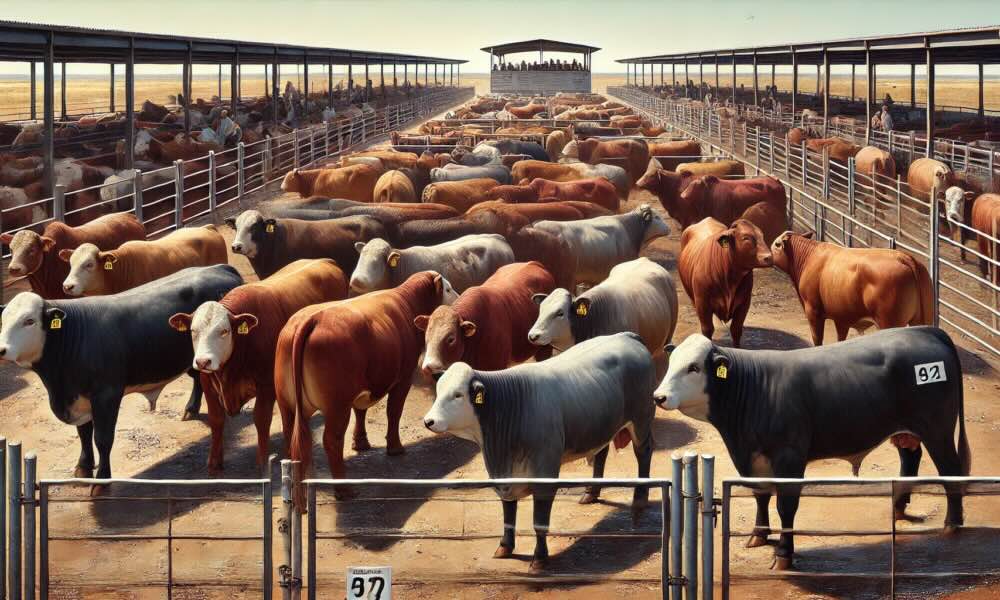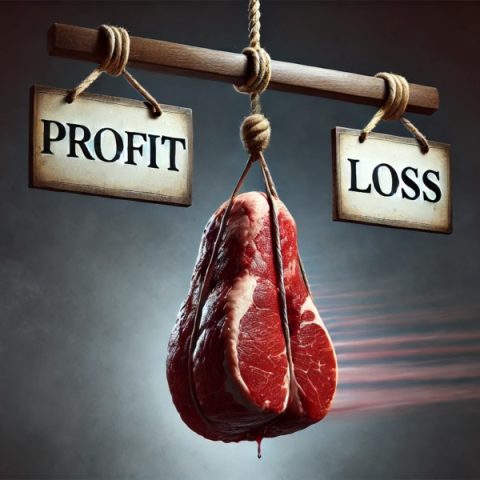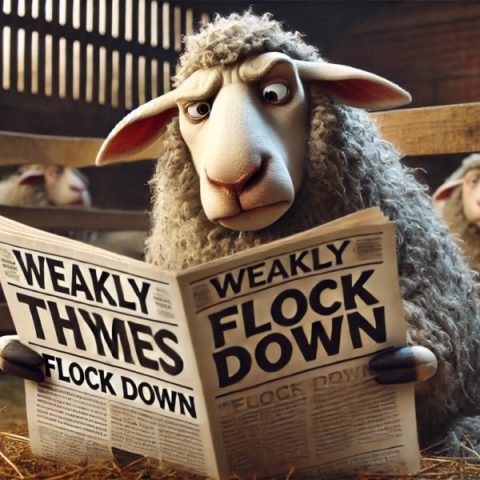Market Morsel
In the aftermath of the Christmas and Australia Day holidays, the Australian cattle market has shown mixed trends in yarding and processing activities across various states. Recent data indicates that cattle yarding levels have rebounded more swiftly than slaughter volumes, suggesting a shift in market dynamics.
This trend is reflected in the respective percentile scores, which operate much like rainfall deciles—an 80% score implies that current throughput levels are higher than 80% of historical records over the last five years, indicating significantly above-average activity.
In New South Wales, yarding activity increased from 63% in December 2024 to 69% in January 2025, while processing volumes rose from 40% to 49%. This balanced growth suggests that local supply is meeting processing demand adequately. Victoria displayed a similar pattern, with yarding percentages rising from 70% to 75% and processing remaining steady at 71%. These figures underscore Victoria’s role recently in supporting national processing demands, particularly in light of Queensland’s reliance on southern sourced cattle.
South Australia saw a significant increase in yarding from 85% to 95%, while processing volumes edged up from 66% to 68%. The high yarding levels in SA have been instrumental in supporting both local processing needs and the overflow demand from Queensland. Tasmania, on the other hand, experienced a decline in yarding from 67% to 61% and a drop in processing from 57% to 52%, reflecting a more subdued return compared to other states.
Western Australia presented a contrasting scenario with yarding levels increasing from 78% to 86%, while processing volumes plummeted from 36% to 16%. This disparity suggests potential bottlenecks in processing capacity, possibly exacerbated by the holiday period.

Queensland exhibited one of the most striking contrasts, with yarding percentages rising modestly from 36% to 39%, while processing volumes decreased from 44% to 31%. Despite this slow start to 2025, Queensland accounted for more than 52% of the national kill in the final week of January, highlighting its significant role in the national beef supply chain.
There are anecdotal reports that some Queensland processors even operated on the Australia Day holiday, an unusual move that underscores the urgency to meet domestic and export demands. Additionally, many processors are now booked for much of February on direct consignment, an uncommon situation for this time of year, indicating a robust processing schedule driven by strong market demand.
The momentum in early-season slaughter cattle turnoff has been fuelled by growing unease over seasonal prospects, prompting some producers to offload cattle early rather than risk market downturns. The recent heatwave across the south-eastern states has further accelerated cattle movements, as producers seek to reduce stock in response to deteriorating grass paddocks.
In terms of pricing during January, the market has seen varied trends across different cattle categories. The Heavy Steer Indicator, for example, has experienced a slight decline of 23c/kg, reflecting the strong cattle supply. Despite this, the Heavy Steer category remains relatively robust compared to historic trends, with current prices of 334c/kg lwt sitting 22 cents above levels seen this time last year. The Feeder Steer Indicator has seen a more pronounced drop of 42c/kg over the past four weeks, and at 350c/kg lwt is very close to levels seen at the start of February last year. Meanwhile the Processor Cow has remained relatively stable, with a minor decrease of 22c/kg over the last month to sit just 6 cents above levels seen this time last year at 266c/kg lwt.
These price movements reflect the complex interplay of supply and demand factors, including seasonal conditions, feed availability, and market expectations. Many direct consignment grids have come back by 20c/kg since the start of the year, yet rates remain reasonably solid, underscoring the resilience of the market. The proactive approach of producers, influenced by past drought experiences, highlights a strategic shift towards early market engagement to capitalise on current pricing before potential downturns.
Overall, the Australian cattle market is navigating a period of adjustment post the holiday slowdown we saw for Christmas/New Year and Australia Day celebrations, with yarding activities rebounding more quickly than slaughter volumes across most states. The interplay of state-specific dynamics, proactive producer strategies, and nuanced price trends across cattle categories underscores the market’s adaptability and resilience in the face of evolving conditions.
As seasonal uncertainties persist, particularly with the fallout of the recent Trump tariff announcements yet to be determined, industry participants across the Australian beef supply chain will benefit from monitoring these trends closely to navigate the challenges and opportunities that lie ahead.




